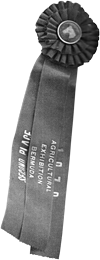
New Fashion Territories – Statement Garments
- One proposal was to move beyond knitwear and experiment with evening wear / statement pieces, inspired by formats like the Met Gala.
- These events often showcase fashion as manifesto, using color and silhouette to convey strong messages.
- Cap_able’s technology could be adapted to fabrics and silhouettes more suited for evening gowns, creating AI-resistant couture that blends fashion and activism.
Wearables – Accessories as Interfaces
There was enthusiasm designing accessories-based wearables such as
- A bucket hat made from Cap_able’s textile
- A pouch or mini-bag that serves both function and concept
These objects could act as portable signals or “decoys” in digital spaces, playful yet purposeful.

Performance & Transformative Clothing
- One powerful metaphor was inspired by quick-change artists: performers who rapidly shift identities through costume changes.
- In this vision, the wearer could layer multiple garments - each sending a different signal to AI systems:
- Fluid identities and dynamic visual languages, this led to the idea of a “swap-it” choreography, where garments act as shifting AI-readable masks.
- The body becomes a living, layered dataset - performing non-consistent, multi-modal selves.
- The wearer cycles between different “characters” (e.g. giraffe, teddy bear…), causing AI to detect them differently each time.
- This suggests a non-static identity - fluid, layered, performative.
Message to AI – Invisible to Humans
A core concept emerged: reversing visibility.
- Humans see only colorful patterns. But only the AI can read the encoded messages embedded in the textile.
- This flips the paradigm: instead of hiding from AI, we speak to AI - while remaining invisible to other humans.
This opens up new avenues in:
- AI-driven stage design: garments trigger real-time changes in digital backdrops
- Generative systems that respond to textile-encoded stimuli
- The creation of “large language objects” that respond not to words but to visual triggers
What if garments could speak only to machines? Garments as semantic surfaces, where hidden messages are encoded for AI-only perception, triggering changes in AR environments, lighting, or soundscapes.
A New Coded Language – Spywear & AR
From there, the conversation evolved toward covert communication systems:
- Garments as encrypted carriers of meaning
- AI-based tools as the only decoders
Applications could include:
- Awareness campaigns à la Pokémon Go: hidden messages only revealed via AR tools
- Covert messaging: the textile becomes a medium for encrypted communication, readable only by those with access to the “decoder”
This sets the foundation for a new AI-readable language, built through garments and surfaces. “Spywear” applications: secure, non-verbal identity verification between agents.
Conclusion – Toward a Hybrid Language
- Across all these insights, a common thread emerged: the potential to design hybrid languages.
- These languages live between the physical and digital, visible and invisible, human and machine.
- AI-resistant textiles are not just about defense - but can also be active agents of meaning, triggering reactions, narratives, and performances that speak directly to artificial systems.




















